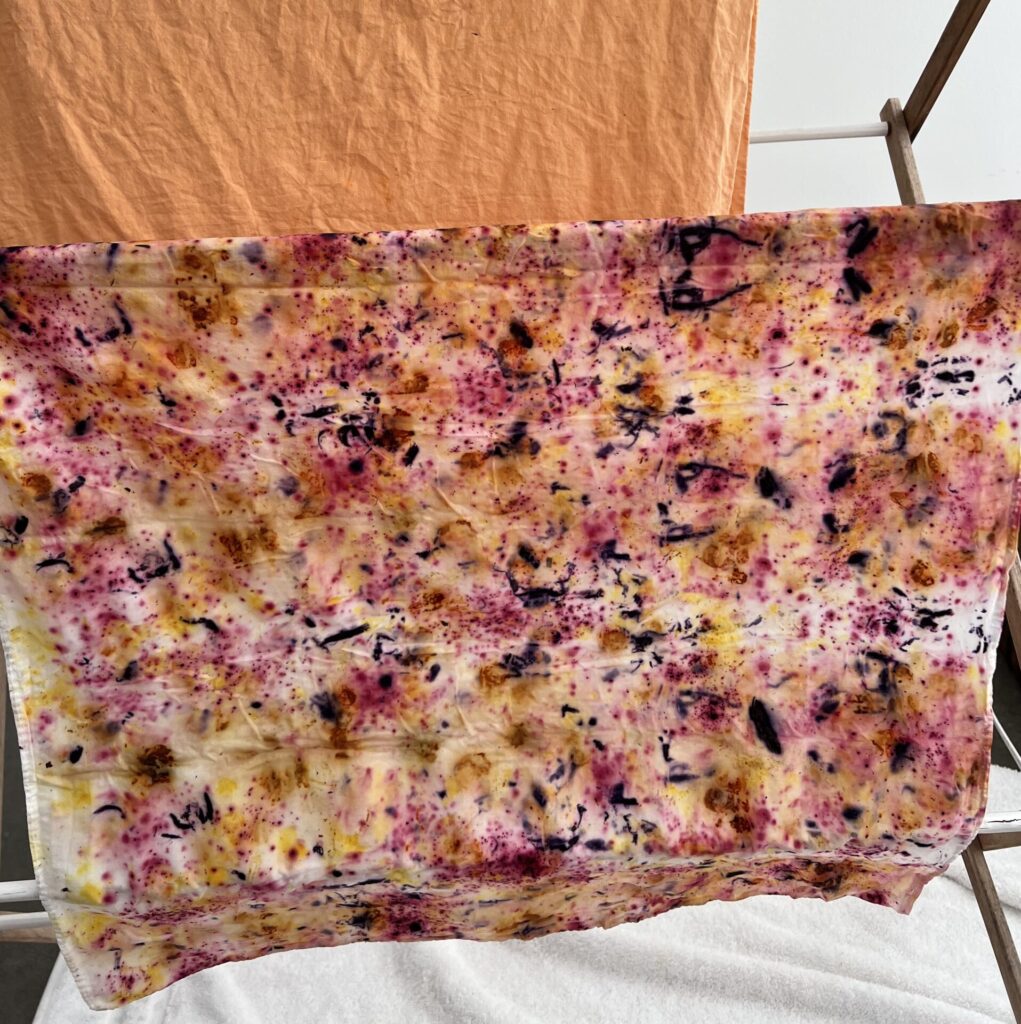
We get mordant questions all the time at Botanical Colors so why not create Mordant Monday??? Got mordanting questions? Email [email protected]
YOU ASKED: I teach kids paper making and am starting an eco print enrichment this week. We are using cotton fabric. I bought alum at the grocery store thinking it was all I needed to soak the fabrics and have them bond with the flower dye, but as I read more into the topic I only find myself more confused at the minute differences. I just want the pigment from the flower petals to bond with the fiber for learning purposes this week and then will have more time to try different mordanting materials. Any quick fix suggestions? I read about soy milk as an alternative, does this really work?
I am a little worried about teaching the kids this process and then not having the dye stick to the fabrics. I was planning to run a few tests with the potassium aluminum sulfate I bought but am finding myself a bit stuck and hesitant to start now realizing that I don’t fully understand the alum mordanting process.
Can I just use the grocery store alum I bought heated up in water to soak the fabrics for 1-2 hours? It is not aluminum acetate, it is aluminum sulfate. Most articles I have read say I need acetate, but do not have access to it in store here and need it before it could be shipped online. I also read you can use cream of tartar and potassium aluminum sulfate, but I have yet to find the measurements for that combination so I am just very confused and looking for some guidance! Any help would be appreciated! Thank you so much for opening that post up for email questions!
KATHY ANSWERED: The alum you purchased at the store will work just fine for what you are trying to do. Here’s some tips to help make this eco print making fun for everyone.
- How much alum do you have? If you bought one of those tiny one ounce containers, buy some more. I’m assuming you have a yard or two of lightweight fabric and it weighs about 8-16 ounces? If you do, then 2-3 ounces of alum will work. If you have 4 yards, buy 4 -5 ounces of alum.
- Wash the fabric in hot water with soap or detergent, rinse and spin out. If you want to cut the fabric into the sizes the children will use, you can dry the fabric and do it now. After the cutting is done, re-soak the fabric.
- Dissolve the alum using very hot water in a small container or jar. Use tools that will not be used for food.
- Fill a larger container (bucket or large storage bin) with cold water, enough to cover the fabric so you can move it around easily.
- Add the dissolved alum to the larger container filled with water, stir well.
- Add the damp fabric and arrange it so there are minimal floating islands of fabric. To do this, add the fabric one by one to the container so it goes in vertically, like putting a sheet of paper into a shredder. Use a spoon or dowel to gently press out air bubbles. No heating required. Stir a couple of times to make sure the fabric isn’t sticking together.
- Cover the bin. Let the fabric soak overnight or even for several days. The longer, the better but it will definitely work after an overnight soak if you run out of time. You can stir occasionally.
- Remove the fabric from the mordant container and spin in your washer. You can rinse lightly. The fabrics can remain damp in a covered storage container or bucket in a cool place for 2-3 days without any problem, so you can just store them damp to get ready for the workshop. If you want to dry the fabrics you can, but re-wetting them is a little harder once the mordant is on the fabric so allow yourself time.
- The fabric is ready for you to do eco-printing. When you eco-print, the longer the flowers are in contact with the fabric, the better, so if the children can wait, they’ll get better results. But it’s totally okay if they can’t wait – they’ll still get nice results.
Good luck with the class time and the children!
You might also like to read:
Easy Eco-Printing Instructions
MORDANT MONDAY: Cloudy Mordant & Eco Printing Fabric
Video From LIVE FEEDBACK FRIDAY: Botanical Printer Irit Dulman
Shop:
Botanical Dyes: Plant-to-Print Dyes, Techniques and Projects
